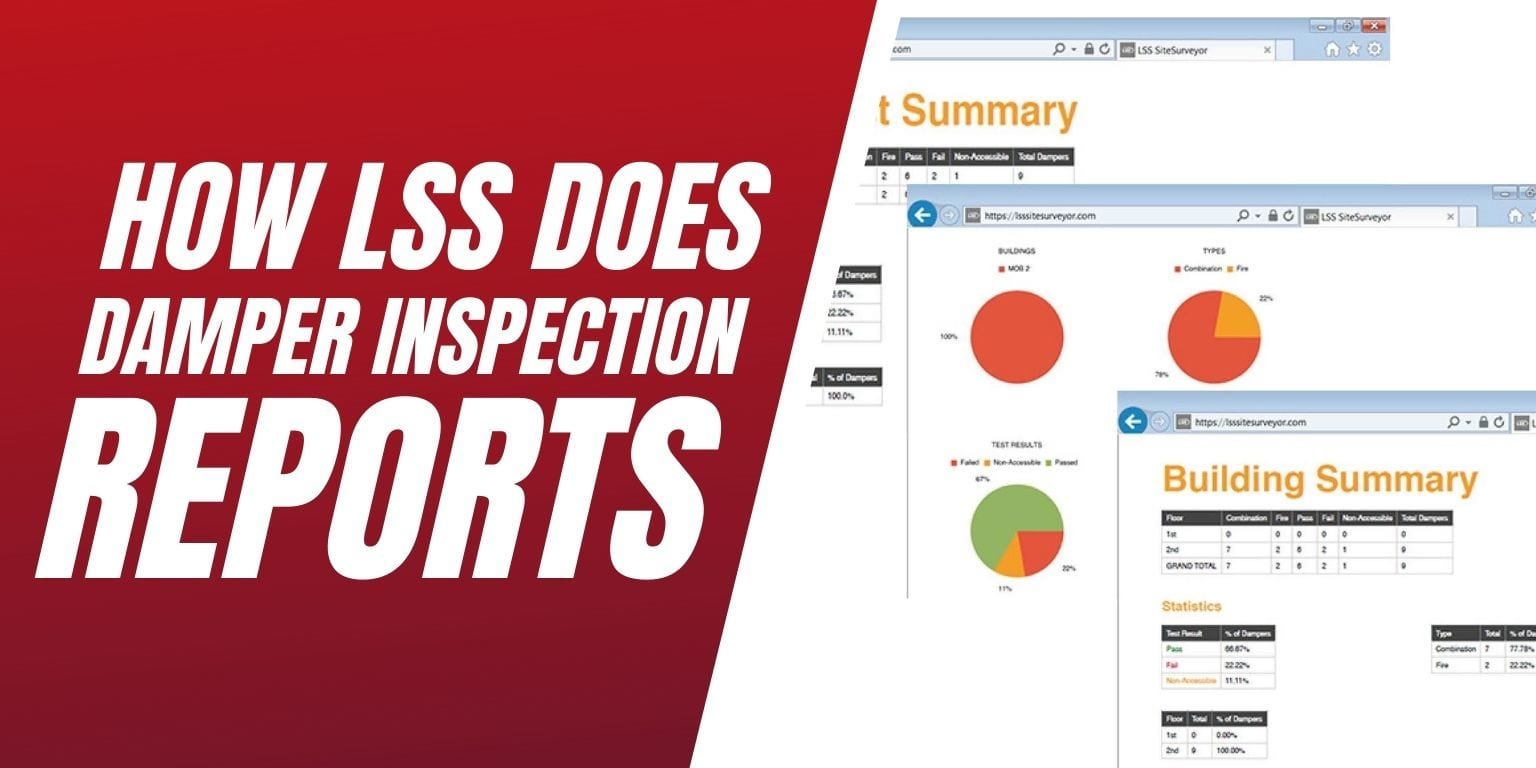
Dampers are a key component to your building’s overall fire and life safety plan. They help prevent the spread of fire and smoke by blocking access through the facility’s ventilation system. Fire dampers are used in ducts to prevent the spread of fire within the duct work through fire-resistance rated walls and floors. When the temperature rises, it melts the fusible link, which shuts the damper and prevents the spread of flame. Similarly, smoke dampers are used in duct work designed to resist the passage of air and smoke. Typically a smoke detector will send a signal to the smoke damper that will close by an actuator when smoke is detected. To get the best of both worlds, a combination damper, which is a fire and smoke damper, are used in areas where both fire and smoke barriers are located to prevent the passage of both flames and smoke.
However, this means dampers are hidden from view, which means they are less likely to be though about. Dampers also have a tendency to frequently fail, which is why they must be maintained on a routine basis. According to the National Fire Protection Association (NFPA), “Each damper shall be tested and inspected one year after installation” and “The test and inspection frequency shall then be every 4 years, except in healthcare facilities where the frequency shall be every 6 years”. And one of the most important parts of a damper inspection is the damper inspection report that is provided after the inspection.
Recently, we posted a blog ‘A Day in the Life of a Damper Inspector’, where one of our techs took you through the daily experience of inspecting dampers. During a damper inspection, inspectors will:
- Locate and operate (i.e. actuate) all fire dampers and smoke dampers in your facility, removing and resetting the fusible link to verify the damper fully closes
- Mark the location of the dampers on drawings, AutoCAD plotting available
- Manually activate electric smoke dampers and pneumatic smoke dampers to ensure that the actuator is operable and to verify it fully closes
How LSS does Damper Inspection Reports
After a damper inspection, inspectors will send in their notes into the corporate office, where the information is put into our company’s online reporting software, LSS Site Surveyor. Each damper inspection reports contains:
- A listing of all the code required information: location of damper, damper number, whether the damper passed or failed, and detailed reason for failure
- Summary report providing statistical review of the fire and smoke damper inspection project to provide you with a “snapshot” overview of the condition of your facility
- “Before” and “After” pictures of every damper
Benefits of LSS Site Surveyor
- LSS Site Surveyor® allows you to access inspection reports instantly from the web via your own customer portal
- Grant user rights and access levels to different members of your team
- Download and export inspection results in numerous formats, such as PDF & Excel
- Click through “before” and “after” pictures of every inspection and installation performed by LSS, which provides visual proof that the service was performed
- Filter inspection results by any combination imaginable: location, building, department/area, floor, damper, door, penetration type, inspection results, reason for failure, etc.
- Store AutoCAD files on a cloud-based portal, ensuring you can find your drawings when you need them.
- Go paperless! Reduce paper filing cabinet space and support your company’s sustainability efforts by housing and assessing all inspection and installation records in the clouds.
According to both NFPA 80 and NFPA 105, dampers that have been found deficient during routine maintenance and inspection, should be repaired as soon as possible.
For more information about how LSS does damper inspection reports, call us at 888-675-4519

